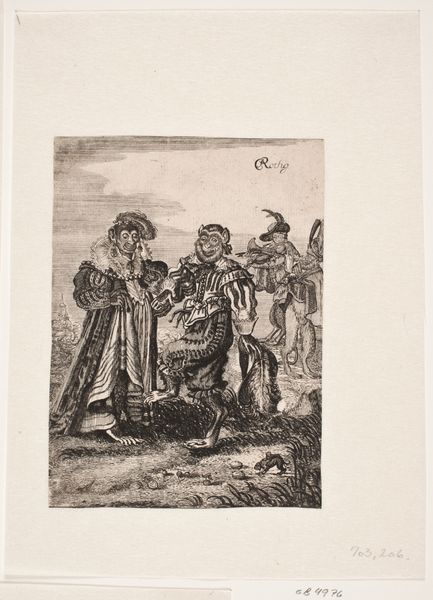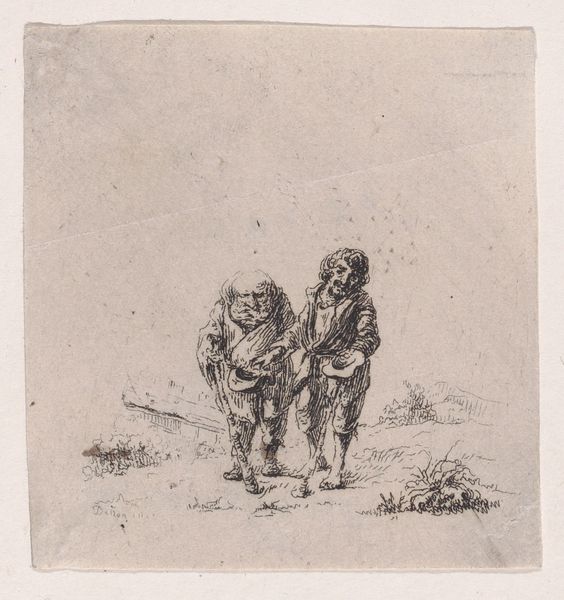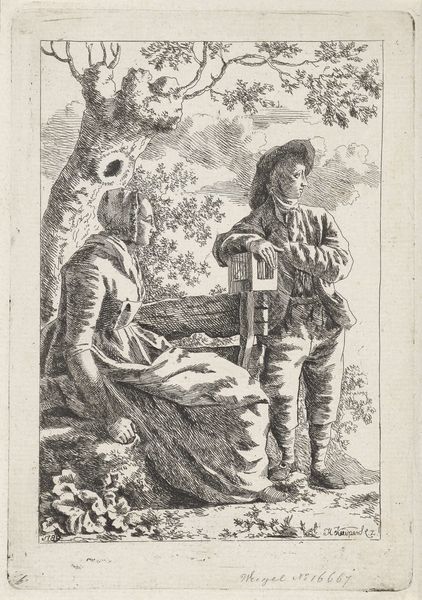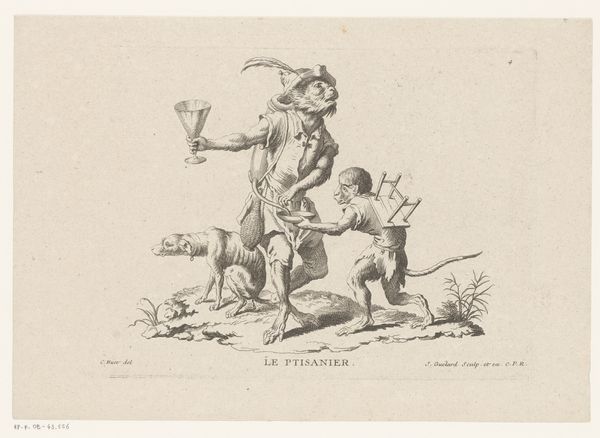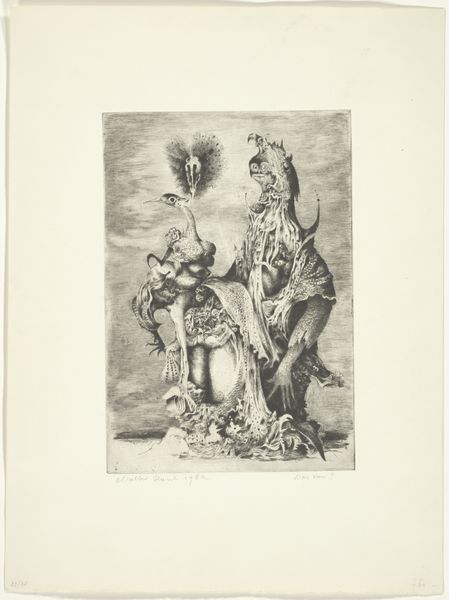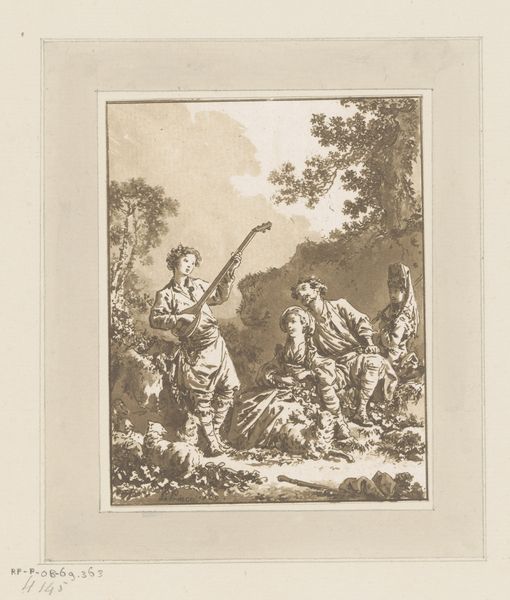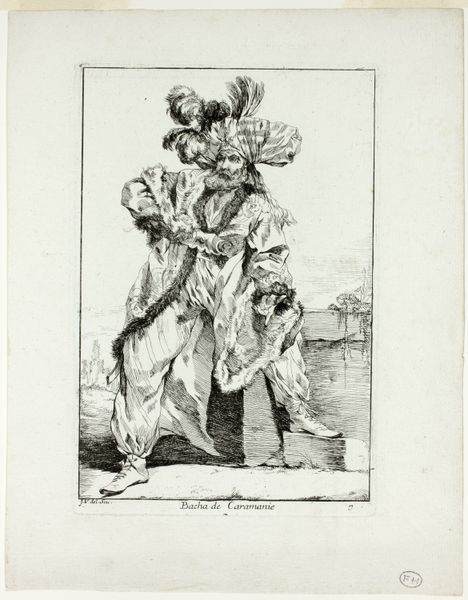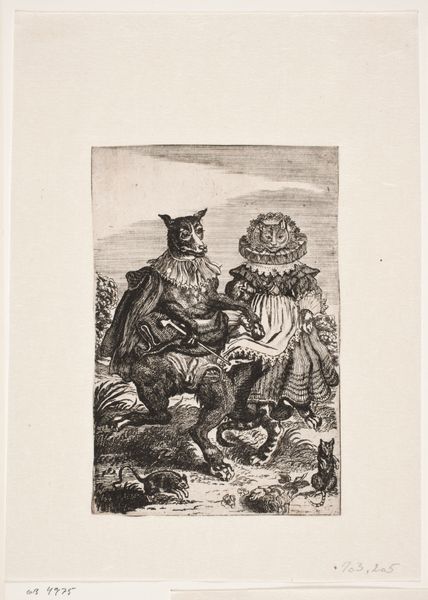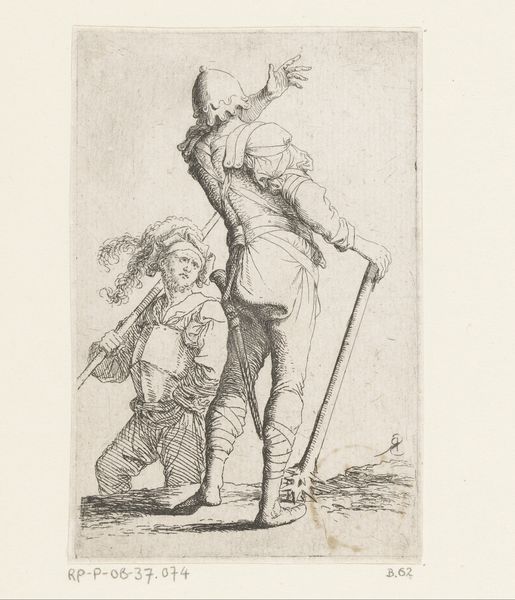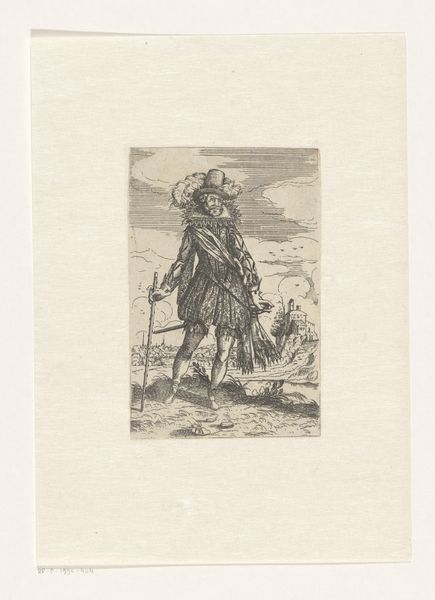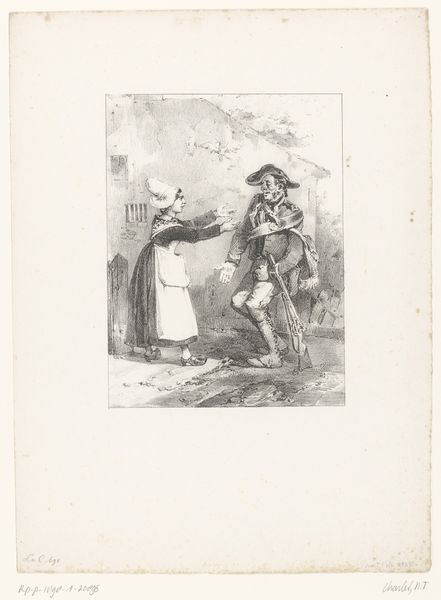
print, etching
#
ink drawing
#
narrative-art
#
baroque
# print
#
etching
#
figuration
Dimensions: 135 mm (height) x 98 mm (width) (bladmaal)
Curator: Rothgiesser’s “Grisepar som danser,” from the 1650s, made with etching and engraving... the more I look at it, the more fascinated I am by its social commentary embedded within its materiality. Editor: Absolutely! These dancing pigs are bizarre but fascinating. What can you tell me about it? Curator: Well, the process itself, etching and engraving, was becoming increasingly accessible during this period, wasn't it? These printing methods facilitated wider distribution of images and, crucially, ideas. Notice the precise lines achievable through the engraving versus the more tonal areas created by the etching mordant... What might this combination signify? Editor: Maybe the contrast between line and tone reflects the division between labor and leisure, or perhaps craftsmanship versus mass production? Curator: Precisely. Consider, too, the choice of depicting pigs dressed in finery, a clear societal satire. The labor involved in creating the plate allows Rothgiesser to mock the leisure of the elite. Could the materials, ink on paper, cheap to reproduce, point to this being art *for* the commoner *about* the elites? Editor: That makes me see the image in a completely different way. It's not just a funny picture; it's actively challenging the social order. Are those dead animals at their feet? Is that mocking their ability to provide in times of scarcity? Curator: What are our takeaways about materials used in its manufacture or as represented in the print and the social realities they suggest? Editor: I will never look at an etching the same way again. Now I see art making as labor itself that produces complex cultural narratives.
Comments
No comments
Be the first to comment and join the conversation on the ultimate creative platform.
